Top 7 Trends in Supply Chain and Logistics 2024: How AI Transforms Warehouses
2023-12-29
"Innovations driven by artificial intelligence pave the way for businesses into a new era of efficiency and precision."
With the arrival of 2024, new horizons are opening up for businesses in the field of storage and logistics. This year marks a breakthrough moment where technological advancement meets the practical needs of warehouse operations. Artificial intelligence (AI) plays a crucial role in this development, becoming not only an innovator but also a fundamental pillar for more efficient and intelligent warehouse process management.
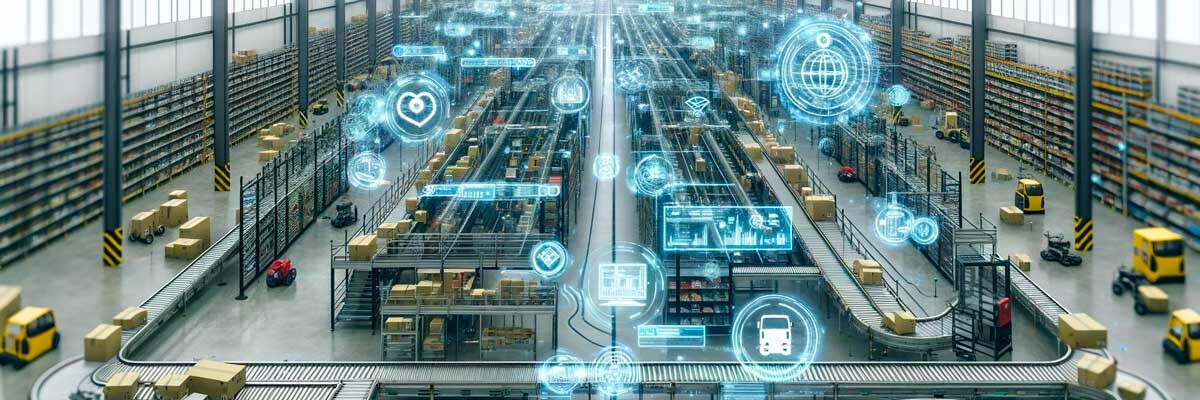
We are on the threshold of an era where artificial intelligence (AI) will not merely be a supplement but a key player in optimizing warehouse operations. Intelligent automation and predictive analytics bring about a revolution in how we manage inventory, process orders, and maintain warehouse efficiency.
The year 2024 symbolizes a transition from traditional, often manually intensive processes to a dynamic and adaptive environment where decisions and activities are data-driven and enabled by advanced AI algorithms.
Innovation and pragmatism go hand in hand when implementing AI in warehouse logistics processes. AI is altering day-to-day operations in warehouses, leading to smoother, faster, and more efficient procedures.
Simultaneously, it opens the door to new possibilities for warehouse operations, thereby enhancing the overall quality of services for customers. Now is the right time for warehouse operators and distribution center managers to prepare for these changes and harness their potential to maximize performance and competitiveness in warehouse management.
TREND NO.1: PREDICTIVE MAINTENANCE IN WAREHOUSES
Utilizing AI to predict faults before they occur
Predictive maintenance is a concept primarily known in the manufacturing environment, where it helps prevent unplanned breakdowns and downtime. By analyzing noise from manufacturing equipment, diagnostics can be made to determine if or when a machine will need maintenance intervention, planned to avoid interruptions during production.
With increasing automation and robotics, predictive maintenance becomes relevant for warehouses, particularly fulfillment centers. AI and machine learning solutions are used to analyze historical data and identify patterns that may indicate imminent faults in automated handling and transportation devices.
Moreover, this analysis doesn't necessarily indicate only a potential breakdown; it can also identify reduced or declining productivity due to increased wear and tear. This means that predictive maintenance in storage devices also serves as prevention against decreased technology performance.
How does it work?
- Analysis of Historical Data: Predictive AI solutions gather and analyze vast amounts of performance and condition data for transportation and handling equipment, including forklifts, conveyor belts, picking robots, and other devices.
- Identification of Patterns and Potential Failure Indicators: Machine learning is used to identify patterns and cues that may anticipate equipment failures, including unusual vibrations, temperature changes, increased wear, or other indicators.
- Early Notifications and Maintenance Intervention Recommendations: Predictive maintenance solutions generate warnings and recommendations based on analyzed data, allowing effective prevention of breakdowns or serious damages to equipment.
What are the practical benefits?
- Reduced Downtime: Predictive maintenance identifies and addresses issues before they cause stoppages in picking or other warehouse processes, enhancing overall availability and performance of handling and transportation equipment.
- Extended Lifespan of Warehouse Equipment: Timely and targeted maintenance helps extend the lifespan of machinery and equipment, reducing costs for part replacements and repairs.
- Increased Efficiency and Safety: Efficient and reliably operating equipment contributes to proper warehouse productivity and a safe working environment.
- Optimization of Maintenance Costs: AI enables more precise maintenance planning, optimizing the costs and resources needed for equipment maintenance.
Utilizing AI for predictive maintenance in warehouse technologies represents a significant step in automating warehouse operations. For warehouse managers and operators, it means better control over the condition of transportation and handling equipment, reducing the risk of sudden failures, and optimizing overall maintenance.
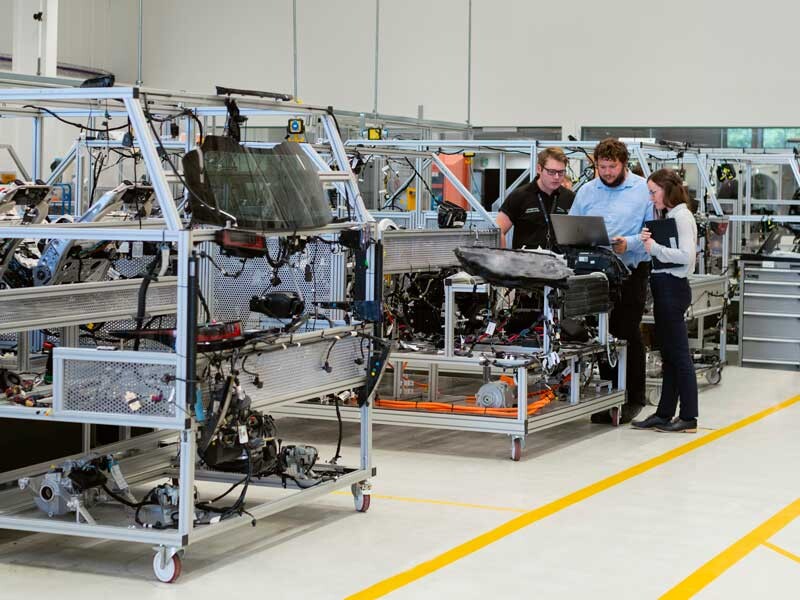
TREND NO. 2: INTELLIGENT WAREHOUSE SPACE OPTIMIZATION
Implementation of AI-driven tools for optimizing warehouse layout
Digitization and automation aid in effectively utilizing warehouse space. AI solutions can be used to analyze and dynamically adjust space utilization in warehouses. Tools for warehouse space optimization are designed to optimize storage layouts, aisle gaps, and material handling and order picking trajectories. This approach maximizes space utilization efficiency and reduces order picking times.
How does it work?
- Space Analysis and Optimization: AI tools analyze the current utilization of warehouse space and identify opportunities for improvement, including adjusting the layout of the warehouse, stock positioning, shelf placement, and aisle optimization.
- Dynamic Warehouse Layout Adjustments: Based on gathered data, these tools modify the warehouse layout to ensure more efficient movement and availability of stock.
- Automated Space Planning: Advanced algorithms are employed to automatically plan and adapt the warehouse layout to meet current needs and plans.
What are the practical benefits?
- Maximized Space Utilization: Intelligent space planning increases storage capacity and streamlines the overall use of available warehouse space.
- Shortened Order Picking Process: Aisle optimization and warehouse layout adjustments lead to faster order picking, reducing the time required for material handling.
- Flexibility and Adaptability: Tools enable quick adjustments to the warehouse layout for changes in assortment or seasonal fluctuations, enhancing warehouse operational flexibility.
- Increased Productivity: Optimizing warehouse space leads to more efficient employee work and overall increased productivity.
Utilizing intelligent tools to optimize warehouse space assists in enhancing efficiency and productivity in warehouses. These tools enable better utilization of available space, reduce operational costs, and simultaneously increase speed and accuracy in order fulfillment, crucial for competitiveness in the turbulent logistics industry.
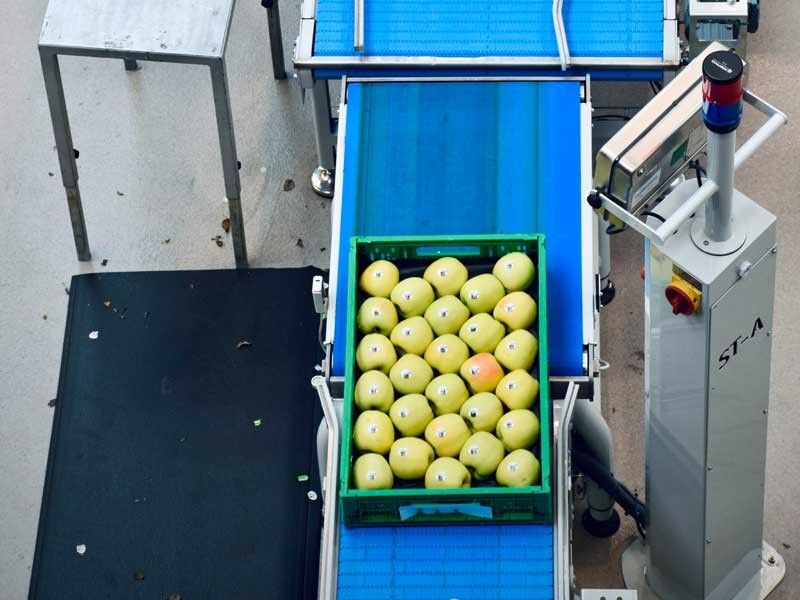
TREND NO. 3: ADVANCED ROBOTICS FOR PERSONALIZED ORDER PROCESSING
Utilization of robots capable of performing complex tasks like customized packing and sorting of goods or materials based on individual order specifications
A revolution is occurring in warehouse logistics due to advanced robotics. Advanced robotic technologies are designed to handle specific and complex tasks, signaling a significant shift from traditional, more universal automation systems.
How does it work?
- Customized Tasks: Robots are equipped with artificial intelligence (AI) algorithms, enabling them to adapt flexibly to various tasks such as packing, labeling, and sorting products based on the individual requirements of each order.
- Advanced Visual Systems: These robots often utilize advanced visual systems that enable them to recognize and manipulate various types and sizes of items.
- AI and Machine Learning: Through integration with AI and machine learning, robots continually learn and improve their performance based on past experiences, increasing their accuracy and productivity.
What are the practical benefits?
- Increased Efficiency: Robots perform associated tasks like packing and sorting faster and more accurately, leading to streamlining the entire order picking and shipping process.
- Flexibility in Handling Various Order Types: Robots can adapt to different sizes and types of orders, simplifying the handling of diverse products.
- Reduced Errors and Improved Customer Satisfaction: Precise and rapid order processing reduces errors, contributing to overall customer satisfaction.
- Sustainability and Space Optimization: Warehouse process automation generally leads to optimizing warehouse space utilization and reduces packaging waste.
Advanced robotics in warehouse and distribution centers significantly contribute to optimizing warehouse processes. For businesses, this primarily means the ability to fulfill orders more efficiently and accurately with higher flexibility and improved adaptation to changes in demand and assortment of picked goods.
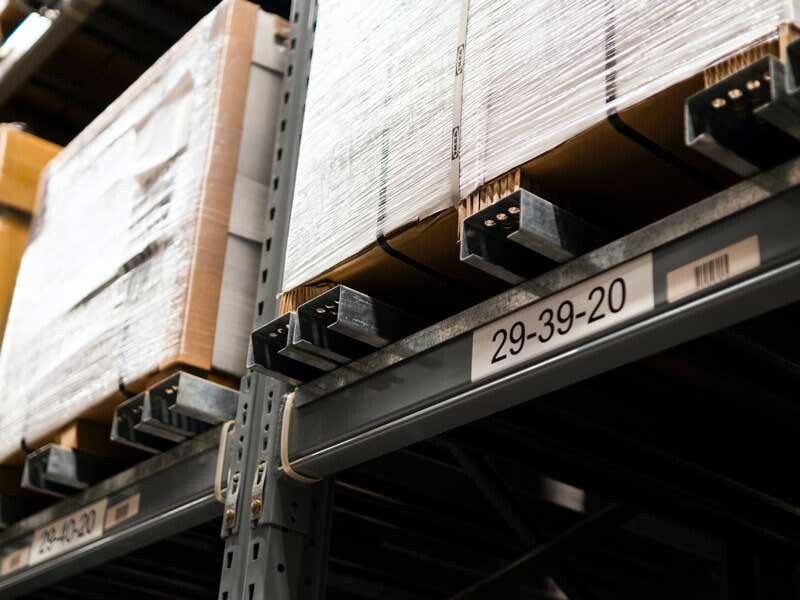
TREND NO. 4: AUTOMATION OF STOCK REPLENISHMENT
Systems automatically trigger stock replenishment orders based on predictive analytics and most desired goods.
Automated Warehouse Management Systems (WMS) utilizing advanced predictive analytical tools ensure necessary stock levels for smooth operations without the need for manual intervention. These systems autonomously assess stock levels and, based on turnover forecasts for the nearest period, generate orders, minimizing the risk of overstocking and inadequate availability of desired goods.
How does it work?
- Predictive Analysis of Required Inventory: Systems use historical data and machine learning algorithms to forecast expected demand trends, adjusting inventory optimization based on these results.
- Automatic Stock Ordering: Based on analytical forecasts, the system automatically triggers stock replenishment orders, ensuring the availability of the most sought-after goods.
- Individual Adaptation: Systems are configurable and adaptable to specific warehouse or operational needs, such as stock minima and maxima, delivery times, and seasonal fluctuations.
What are the practical benefits?
- Inventory Optimization: WMS systems ensure the warehouse maintains the correct stock levels at any given time, minimizing downtime and maintaining smooth operations.
- Reduction in Storage Costs: Automated stock replenishment reduces costs associated with excess storage, waste, and handling.
- Enhancement of Customer Satisfaction: Consistent availability of goods increases customer satisfaction and improves services.
- Reduced Need for Manual Intervention: Automating the stock ordering process relieves workers from routine tasks, allowing them to focus on higher-value-added activities.
The implementation of automated WMS systems with inventory replenishment functionality is another aspect of more efficient and accurate warehouse management and order fulfillment. WMS systems enable warehouses and operations to automate and optimize stock replenishment processes, thereby reducing operational costs, minimizing errors, increasing overall warehouse productivity, and enhancing customer satisfaction.

TREND NO. 5: SUSTAINABLE OPERATIONAL PRACTICES IN WAREHOUSES
Operating warehouses with low energy consumption and reduced carbon footprint.
Reducing the negative impacts of businesses on the environment has become a global goal. Emphasizing green logistics and carbon neutrality can be achieved through eco-friendly practices such as using solar energy, electric forklifts, and sustainable packaging. Part of sustainable warehouse operations is also optimizing inventory layout to reduce energy consumption.
How does it work?
- Solar Energy for Warehouses: Solar panels on warehouse rooftops form part of renewable energy sources, reducing reliance on fossil fuels and carbon emissions.
- Electric Forklifts: Replacing traditional fossil-fueled forklifts with electric alternatives that produce fewer emissions, are more energy-efficient, and contribute to a better work environment.
- Sustainable Packaging: Using recyclable or biodegradable materials for packing goods and orders, reducing waste and supporting sustainable processes.
What are the practical benefits?
- Reduced Environmental Impact: Sustainable practices help decrease the overall ecological impact of warehouse operations by reducing emissions and better utilizing corporate resources.
- Lower Operational Costs: In the long term, green measures can lead to reduced operational costs, such as lower energy expenses, materials, and waste reduction.
- Brand Strengthening and Social Responsibility: Implementing sustainable practices reinforces companies' reputation as responsible and environmentally conscious firms, increasingly important for consumers and business partners.
- Adaptation to Regulatory Requirements: With an increasing focus on environmental sustainability and regulations, sustainable practices assist businesses in staying compliant with legislative requirements and standards.
Incorporating sustainable practices into warehousing processes brings environmental benefits and long-term economic and social advantages. For warehouse operators, this means an opportunity to modernize their processes and contribute to positive environmental changes without negatively impacting warehouse productivity and budgets.
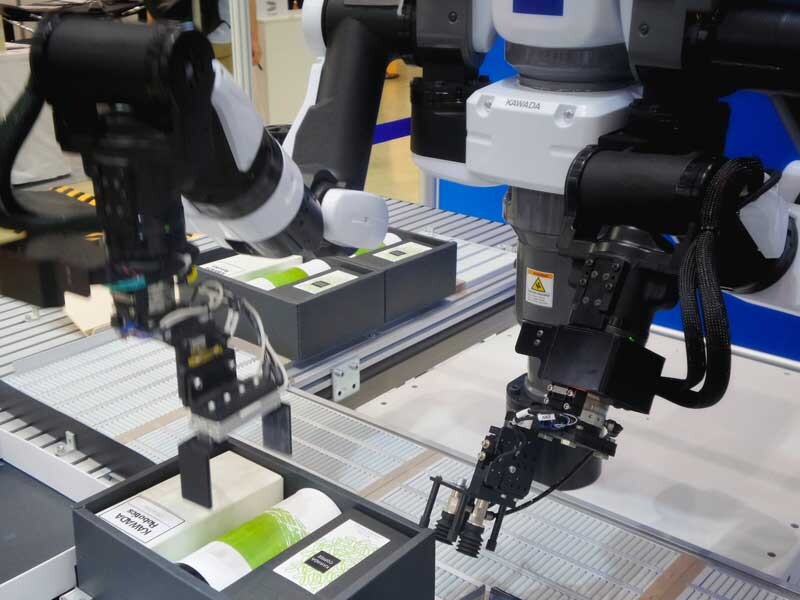
TREND NO. 6: HYPER-AUTOMATED WAREHOUSES
Deploying integrated systems with Artificial Intelligence (AI) throughout the warehouse.
Hyper-automation in warehouse management, inventory, and orders involves deploying AI tools and systems across various aspects of warehouse logistics and order fulfillment. This enables comprehensive management and optimization of warehouse processes from inventory reception and control to order dispatch.
How does it work?
- Integrated AI Across Systems: AI tools are integrated into various warehouse systems, ranging from controlling WMS systems to automated vehicles and other transport, handling, and packaging technologies. This integration allows data sharing and analysis across different platforms and parts of warehouse processes.
- Process Optimization: AI helps optimize and automate processes like inventory control, order picking, and dispatch planning, making individual processes more efficient and less prone to errors, downtime, or complete halts.
- Frictionless Decision-Making: Centralized data analysis through AI tools leads to more precise and seamless decision-making at all levels, resulting in smoother operations with increased productivity compared to conventional technologies and procedures.
What are the practical benefits?
- Increased Productivity: AI tools reduce time spent on manual processes and enhance overall warehouse operational productivity.
- Better Inventory Management: Precise and efficient inventory management reduces excess stock and improves stock turnover.
- Improved Planning and Forecasting: AI enables better demand forecasting, optimizing turnover plans, leading to better utilization of corporate resources and reduced operational costs.
- Error Elimination: Process automation reduces the risk of human errors, resulting in more precise and reliable warehouse performance.
Hyper-automated warehouses with integrated AI tools are gradually becoming part of warehouse logistics. This technology provides companies with tools for more efficient warehouse operation management, increased productivity, improved accuracy, and reduced operational expenses. For managers, this means shifting from managing routine daily procedures to strategic decision-making and innovation.

TREND NO. 7: ADVANCED DATA ANALYSIS FOR CUSTOMER DEMAND FORECASTS
Utilizing advanced data analytics and machine learning for accurate customer demand forecasting in different periods.
The use of advanced analytical tools and machine learning algorithms enables a better understanding and prediction of future customer demand. This approach helps warehouse management primarily optimize the stock levels of different types of goods, minimize the risk of excess or inadequate inventory, and more efficiently manage warehouse resources.
How does it work?
- Big Data Analysis: Advanced data analysis tools gather and process vast amounts of information from various sources, including sales data, market trends, seasonality, and consumer behavior.
- Machine Learning and Predictive Analysis: Machine learning algorithms analyze this data, identifying patterns and trends that forecast future demand. These tools gradually learn and improve their forecasts based on new data and outcomes.
- Dynamic Inventory Adjustment: Based on demand analyses and forecasts, warehouse managers can dynamically adjust inventory levels to avoid excess or missing goods.
What are the practical benefits?
- Inventory Optimization: More accurate forecasts enable more efficient inventory management, reducing costs associated with excess inventory and minimizing the risk of stockouts.
- Improved Planning and Efficiency: A better understanding of demand leads to more efficient resource planning, reducing overall costs and contributing to customer satisfaction.
- Faster Responses to Market Changes or Consumer Behavior: Data analysis allows quicker identification and response to changes in consumer behavior and market trends.
- Reduction of Errors and Risks: Automated analytical processes decrease human errors, enabling more precise and reliable decision-making processes.
Advanced data analysis and machine learning in customer analysis and forecasting contribute to optimizing warehouse processes. For warehouse managers, this means the ability to manage inventory more effectively, respond better to changing market conditions, and increase operational profitability.







